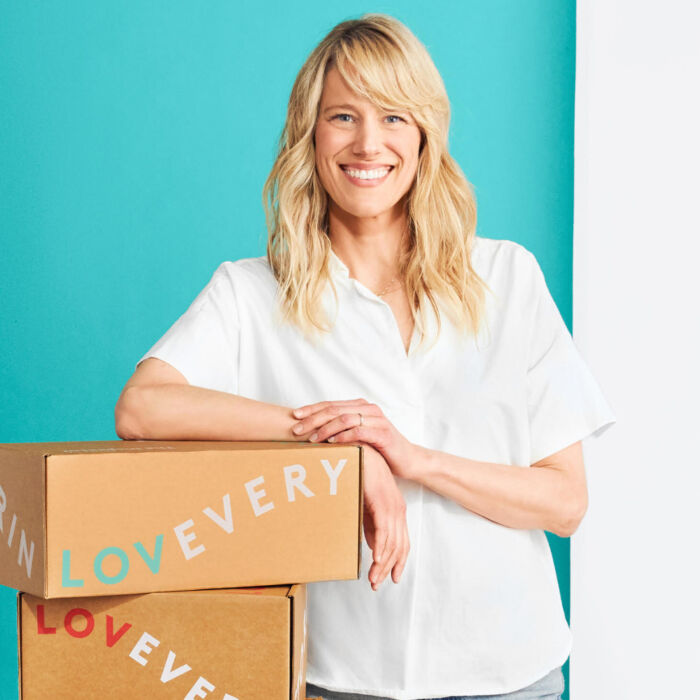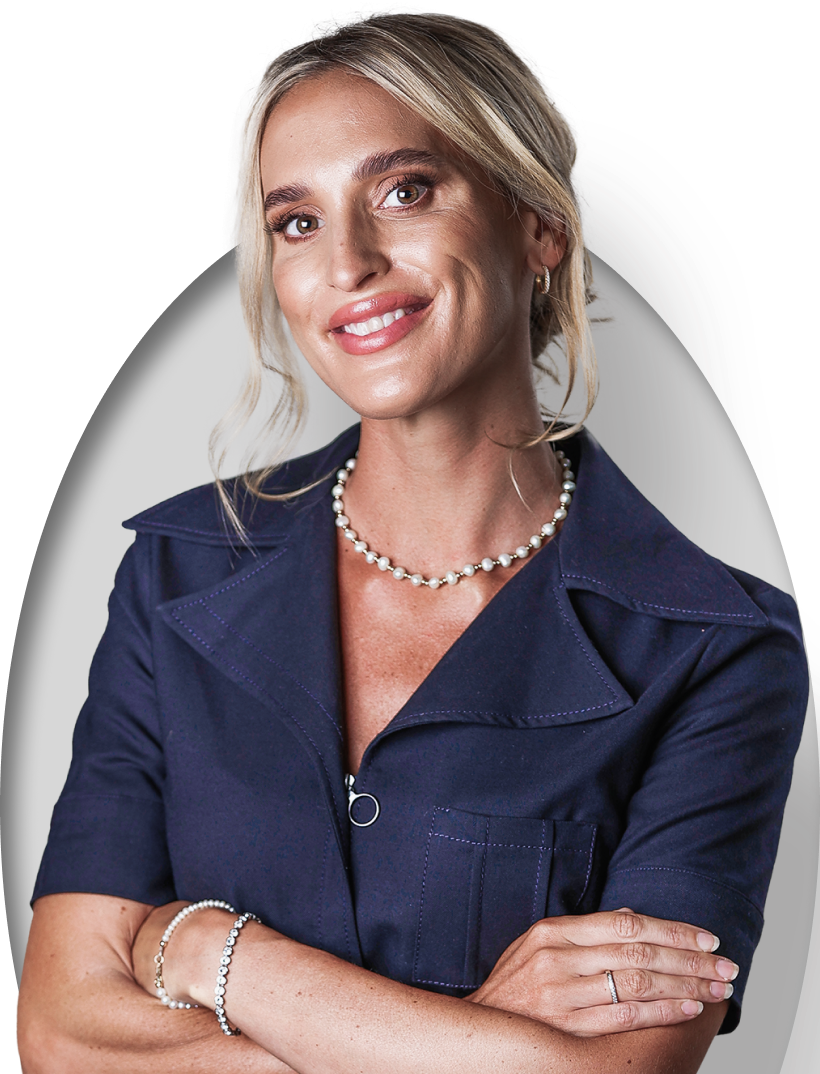Walk into any store that sells baby food and you’ll see a plethora of organic options and dozens of different types of squeeze pouches.
That wasn’t the case nearly 15 years ago when Jessica Rolph and her partner, Shazi Visram, put the very first pouches on store shelves. Their Happy Family baby food company was just three years old and had been struggling to attain that perfect market fit in the parenting space.
Happy Family was founded in 2006 as a purpose-driven company. Their goal was to provide fresh, organic baby food in a market with few choices.
“At the time, only 3 percent of all baby food consumed was organic,” Rolph says. “We had a dream to change the way that babies are fed in this country. We really wanted to bring that best nutrition to early life.”
They tried fresh food, which wasn’t scalable, and frozen food, which wasn’t a fit for the market. But when they launched their organic cereal puffs and then their pouches, parents responded, and the company took off.
Today, Happy Family is the leading organic baby food company in the U.S. They invented the now-ubiquitous squeezable pouches that practically every baby and toddler brand emulates.
“I remember going to bed every night dreaming about building this company that was purposeful, that was successful, that was changing the way that babies were fed,” she says.
“I remember going to bed every night dreaming about building this company that was purposeful, that was successful, that was changing the way that babies were fed.”
In 2015, Rolph and Visram sold the company to Danone, reportedly for more than $250 million, which allowed Rolph to focus on a new purpose-driven business: a subscription-based toy company with a focus on early childhood development. Now in its eighth year, Lovevery has more than 300,000 active subscribers and is one of Fast Company’s Most Innovative Companies.
Once again, Rolph was hyperfocused on her audience: parents who care deeply for their child’s development and children who want fun toys to play with.
“Parents are willing to hand over their trust readily to someone who is solving this core need for them of ‘help me feel better about this really chaotic, hard parenting experience. I want to feel more optimistic. I want to feel more confident.’ We bring that confidence to parents in their homes,” Rolph says.
Organic Baby Food and a Leap of Faith
Rolph had intended to be a lawyer when she veered off that path to attend business school. She found she had a passion for connecting business with social change, fully believing that it could be a platform for that change.
In 2005, Rolph was working for Whole Foods when a colleague introduced her to Visram, a woman studying at Columbia University and working on an idea for a company that made fresh baby food available nationwide.
“I looked at the numbers,” Rolph says. “The baby food category is all Gerber; it’s so many jars. Really, the organic baby food set is so small compared to the possibilities and the opportunity.”
After talking with Visram on the phone and making a single visit to New York, Rolph decided to join her there and start the company together.
They each put in $10,000 and started to build a business plan. As they made batch after batch of baby food in their kitchens, however, they realized a fresh product wouldn’t scale.
“I had a pH meter in my kitchen,” Rolph says. “I was making all these batches of homemade baby food and sending my husband to work with them because I didn’t want to waste all this puree.”
Happy Family: Testing the Market and Pivoting
Rolph and Visram realized they needed a way to keep their baby food from spoiling. So they pivoted and launched Happy Family with a frozen product just one year after their first conversation.
They hustled to raise money through family and friends. They moved from their kitchens to their first factory, which turned out to be rat-infested. Then, they convinced another company, Ian’s Natural Foods, to let them produce their products and even acquired the $80,000 machine they needed to squirt the baby food into the containers.
“Shazi and I talked about ourselves like we were Laverne and Shirley on the production line,” Rolph says. “I would squirt the carrots and then hand them to Shazi. And she would squirt the peas.”
Rolph used her connections at Target and Whole Foods and shipped samples to the retailers. They loved the prototypes—enough to agree to stock their products.
“They were looking for something different. They knew that the new parent was such a valuable customer for them, and they knew that the category was pretty stale. So they were willing to take a bet on us.”
But they soon realized they had another problem.
While retailers loved this new spin on a shelf staple, no one wanted to buy it—or at least, no one thought to look for baby food in the frozen aisle.
“It turns out that these decisions are made at the regional level, and so we convinced one of these regions to take a bet on us,” Rolph says. “And then the work really started, which was trying to get the actual sales to happen in the stores.”
Once they were in Target, Visram and Rolph got access to sell-through data from the retailer, and the numbers weren’t good. They had only finished their second batch of food at the factory and knew they needed stronger numbers to survive.
Rolph had a crazy idea. She flew to her hometown in Minnesota, also home to Target’s headquarters, and recruited her dad to drive to every Target possible to buy up their baby food.
“It was like my mobile office—this big dashboard in his station wagon with the map of all the stores,” Rolph says. “We drove around, and we bought the products, and then we handed them out to customers as they were shopping, trying to get them to try the product.”
“We drove around, and we bought the products, and then we handed them out to customers as they were shopping, trying to get them to try the product.”
The tactic worked but wasn’t scalable. Time to pivot again.
They started by putting little tags in the baby food aisle inviting customers to look in the freezer section. “But we thought the best way to do this is to have a product in the dry aisle that would then have a coupon for the frozen baby food,” Rolph says.
Rolph and Shazi launched Happy Family puffs, a dry cereal that breaks down easily and is used as a first solid food for babies. The puffs were a big break for the company—some would say a lucky break.
They happened to launch their product at the same time their main competitor, Earth’s Best, was having supply chain issues. To fill the empty shelf space, retailers stocked Happy Family puffs.
“For some reason, for like three or four months, we were the only cereal on the shelf, and they just stocked us,” Rolph says. “I remember a picture of just all of our little cans lined up. We couldn’t believe it. And so that was really the break that we got to be able to scale to the next level.”
But it was more than just luck that boosted their company. Rolph and Visram had finally hit on product-market fit. Not only was their product in the right place in the supermarket, but it was exactly what customers were looking for in a baby cereal.
“We stripped out all of the fake flavors, the fake colors, the things that the other competitors had and made a natural version [of] those puffs,” she says. “We truly had product market fit. So customers wanted them. They loved our natural approach, and that’s what started getting us momentum.”
“We truly had product market fit. So customers wanted them. They loved our natural approach, and that’s what started getting us momentum.”
According to Rolph, the puffs gave the company the boost they needed to release their pouches in 2009. The product was an instant hit with parents.
“It was so convenient,” she says. “They loved the fact that children could self-feed and hold it in their hands. And we included nutrients like chia. We mixed fruits and vegetables into those pouches, and so parents really felt like we were giving them a gift of healthy food inside of a package that was really fun for their children and toddlers to eat.”
The pouches helped Rolph and Visram scale the business and set them up for the successful sale of the business to Danone.
Lovevery: Research and Testing
With one successful business under her belt, Rolph was ready to move on to the next.
“I felt like I wasn’t done with the experience of creating a company,” she says.
She started speaking to her current partner, Rod Morris, who had experience growing mission-driven companies. They started talking about a subscription-based toy company focused on early learning and development.
“My partner Rod and I have a fifty-fifty partnership,” she says. “We’ve really built this business together, and that process has been one of the most satisfying things. It’s really about trying to get out this vision that you can’t help but share.”
Rolph and Morris spent a significant amount of time fostering relationships with potential customers and testing products with families all over the country, iterating as they went.
“It felt like we were never going to launch this first product for Lovevery,” Rolph says. “We had done so much testing to make sure that we had our best shot at product-market fit at the moment that we launched.”
“It felt like we were never going to launch this first product for Lovevery.”
For Happy Family, she says, much of their product development was based on instinct, which they then tested in the market.
Rolph and Morris launched their first product, the Play Gym, in 2017 on Amazon. Using Amazon allowed them to encourage people to follow them on Instagram and collect a customer list for their weekly email series on child development and upcoming products. From that list, they built out their direct-to-consumer (DTC) subscription model.
“We launched with Amazon because that’s the place where search originates,” Rolph says. “It’s the place where a lot of registries happen, and our dream was to be the number one in revenue in the category on Amazon within a year of launch. And I remember literally going to sleep at night and visualizing number one in revenue in the category on Amazon.”
Within a year, they were there. The response to the Play Gym was immediate—a real indicator that they had hit product-market fit from the beginning. They had strong sales within weeks of launch, and parent influencers picked up their product.
That testing and constant iteration have meant market fit on nearly all the products the company has launched since. Her advice to other founders who want to hit the ground running with their product is to do the same.
“Obsess over your product and really do a ton of testing and research before you launch,” she says. “And then after you launch, remember that your product is not done; that actually launching the product is a continuation of the product development process. That’s where you start getting feedback at scale and continue to obsess over that feedback and iterate your product. Never be satisfied with what you have. Always be looking to make it better.”
“Never be satisfied with what you have. Always be looking to make it better.”
“We have really built an engine of recurring revenue growth through our business by bringing purpose and confidence to parents in early childhood,” Rolph says. ”We have 320,000 subscribers, $200 million in run-rate revenue, and $150 million in subscription ARRs (annual recurring revenue). We’ve got world-class retention in our subscription program. So all the business metrics are there.”
Keep Learning: How Hismile Transformed from Internet Sensation into a Category Contender
Two Companies With One Purpose
Happy Family and Lovevery are very different companies within the parenting space, but Rolph attributes their success, at least in part, to her and her partners’ focus on their customers—both parents and children.
Rolph understands that her customers are constantly changing; children are growing and hitting different milestones, and parents are pivoting to meet the needs of their children. Happy Family provides nutritious foods for children at different growth stages, and Lovevery provides toys for children and content for parents as they grow.
That purpose, to support parents and their children, is what drives the success of her companies.
“For us, the purpose is to improve outcomes for children and really advocate for what that child needs at each stage and then help the parents feel really confident and good and optimistic about their parenting,” Rolph says.
It’s the heartbeat of Rolph’s work, something she believes every company should have. “I think that a lot of companies do have a heartbeat,” she says. “It’s about making sure that you amplify that as a founder.”





















